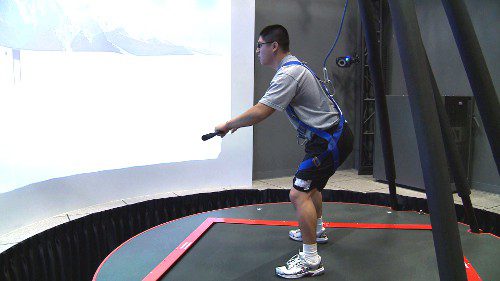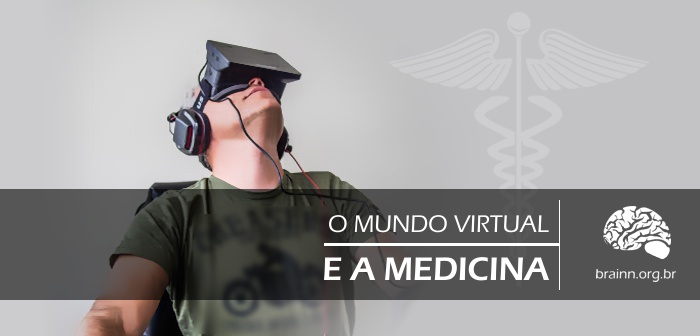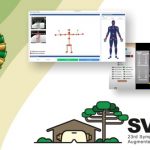Researchers want to understand how the brain reacts to the use of Virtual and Augmented Reality as therapeutic stimuli.
April 28th, 2016
by Erik Nardini Medina *
Picture this: a patient with a paralyzed arm (as a result of a stroke) has his image captured by a camera and transmitted to a computer. Then, a software analyzes the patient’s body and “replaces” the member without movement with a healthy arm, virtually created by a technology known as augmented reality. Incredible, right?
It may sound like science fiction, but research on techniques like this one is already happening – including in Brazil. The BRAINN – Brazilian Institute of Neuroscience and Neurotechnology – is one of the reference centers in this area. Institute researchers are studying the use of the latest technology to assist in the recovery of those who have suffered a stroke.
STROKE NUMBERS IN BRAZIL
Stroke is the main cause of death by disease in Brazil. According to the Ministry of Health, the number of deaths from stroke reaches almost 100,000 people every year!
In 2000, 84.713 people died because of a stroke; in 2010, there was a peak of 99.726 victims. When the person does not come to death, he or she not rarely ends with severe and limiting consequences – affecting movements of some members or of the entire body.
HOW TO TREAT A STROKE?
Despite those scary numbers, there is reason to cheer. Treatments for those who have suffered strokes have evolved considerably in recent years.
Apart from the drugs field – whose administration usually occurs only in the period when the patient is in hospital -, physiotherapy sessions are prescribed, but usually for an indefinite amount of time. This is when patients and physiotherapists can be given support by technologies associated with Virtual Reality (VR) and Augmented Reality (AR).
RESEARCH MADE BY BRAINN
Pioneering studies on these two virtual applications have been conducted under the supervision of BRAINN´s Gabriela Castellano, associate professor of the Institute of Physics “Gleb Wataghin” at the State University of Campinas (Unicamp), and BRAINN´s scientific diffusion coordinator.
The projects, still in their early stages, adopt strategies to encourage motor coordination in the patients, transforming the exercises into more fun and effective activities.
DIFFERENCES BETWEEN VIRTUAL AND AUGMENTED REALITY

We live in the age of Virtual Reality. The technology will be more and more used in educational and medical scenarios.
In the studies conducted by BRAINN, two assistive technologies gain the spotlight: Virtual Reality and Augmented Reality. Do you know the differences between them?
Virtual Reality (VR): this is the one in which the subject is ‘inserted’ into a three-dimensional interface and participates in certain scenarios – in other words, his/her movements are played in a fictional environment.
The Kinetic motion sensor device – the same one used for Xbox games – is employed in the VR activities. “In this case, the person handles objects in the video through gestures. Sometimes, the patient controls an avatar on the screen, which reproduces in the virtual space their movements in real space”, explains Gabriela Castellano.
Augmented Reality (AR): 3D elements can be “inserted in the real world.” To illustrate this concept, just look at what financial institutions are doing nowadays. Banks use AR, for example, to allow users to search for agencies in the city. When someone points the camera phone to a certain position, the application adds visual elements to the screen that mingle with the real images captured by the phone. It is the fictitious presenting itself in the reality.
“For the AR, the focus lies on patients with limited movement in their arms”, said Castellano. “A camera captures the image of the patient and transmits it to a computer. The software then analyzes the patient’s body and ‘replaces’ the numb member for an arm through augmented reality”, explained the professor.
NEUROPLASTICITY

VR has been used for some time now to help wounded soldiers reclaim movements and get back to life.
The projects aim to assess the possible effects of neuroplasticity, which is the ability of the nervous system to adapt at the structural and functional levels when subjected to new experiences. “We want to understand the evolution of the nervous system after using these applications in motor rehabilitation,” says Castellano.
“With the advancement of research techniques, we can compare the results of a rehabilitation supported by AR and VR with the results obtained in ‘conventional’ rehabilitation”, concludes the researcher.
With the help of science and high technology, health teams are already able to handle the aftereffects of strokes with utmost care and efficiency. This partnership will bear even greater fruit in the coming years, when techniques such as Virtual Reality and Augmented Reality are perfected and become routine in medical care. In this way, stroke sequelae may stop debilitating thousands of people every year, both in Brazil and throughout the world.
* Journalist graduated from the Pontifical Catholic University of Campinas (PUC-Campinas), student of Science Journalism specialization at the Advanced Studies in Journalism Laboratory (Labjor / Unicamp). Has a MídiaCiência / FAPESP scholarship.










 Português do Brasil
Português do Brasil